IONIC Smart Color – paints that handle everything a modeler needs
Looking for paints that can handle both fine brushwork and smooth airbrushing without compromise? Then you should definitely take a look at the IONIC Smart Color range. These modern acrylic paints combine precision, versatility, and excellent working properties. In this article, we’ll explore what makes them stand out, how they differ from the Atom line, and how to get the best results from them – whether you’re using a brush or an airbrush.
What is IONIC Smart Color
IONIC Smart Color represents a new generation of water-based acrylic paints designed for modelers who want consistency and control. Their formula is focused on easy application, excellent atomization, and color stability. The pigmentation is high and even, providing smooth coverage without streaks or uneven spots. The paint adheres perfectly to plastic, resin, and metal surfaces, making it a reliable choice for a wide variety of modeling projects.
One of the biggest advantages of IONIC Smart Color is its versatility. It performs equally well when brushed or sprayed, maintaining consistent color flow and tone in both cases. The paints dry quickly, allowing you to layer efficiently without long waiting times. Combined with their good fluidity and easy mixing, they are paints you can simply trust – predictable, stable, and enjoyable to use.
Advantages you’ll notice right away
IONIC Smart Color delivers exactly what modelers expect from a modern acrylic paint. The pigments are rich and balanced, even the lighter tones cover well, and the paint applies smoothly without brush marks. The consistency is just right – thick enough for brushing, yet easily thinned for airbrushing. The quick drying time speeds up the workflow, while maintaining a silky, even surface even with very thin layers.
The range also offers a wide selection of colors – from standard military tones to specific shades for interiors, panels, and cockpit details. For those who like to experiment, these paints allow subtle layering, glazing, and blending to achieve realistic color transitions. They also have excellent shelf stability – they mix easily, resist drying in the bottle, and remain usable for a long time.
Comparison with the Atom line
Modelers familiar with the Atom series will immediately notice a different character. While Atom paints are often tailored for specific tasks, such as ultra-fine airbrushing or rapid surface coating, IONIC Smart Color focuses on universal usability. Its balanced consistency makes it easy to switch between brush and airbrush without complicated thinning adjustments.
Both lines feature high-quality pigments, but the difference lies mainly in specific shades – some Atom colors may provide stronger opacity, while IONIC offers more uniform coverage and stability across the palette. In terms of handling, IONIC stands out for its smooth and predictable flow: it sprays evenly, minimizes tip dry, and rarely clogs the nozzle.
Surface finish also differs slightly – IONIC dries to a natural matte or satin look, which can easily be modified with varnish. Atom, depending on the sub-series, sometimes produces more pronounced visual effects. Price-wise, both ranges are quite comparable, so the final decision often comes down to preferred shades and personal workflow.
Practical use in modeling
IONIC Smart Color is suitable for all painting stages – from basecoats to final detailing. Its fast drying and smooth coverage make it great for primed surfaces and base layers. It works beautifully for shading and highlighting too, performing equally well in pre-shading and post-shading applications. When properly thinned, it produces transparent glazes ideal for smooth color gradients and realistic transitions.
For brush painting, prepare the surface with a primer and clean it thoroughly. Thin the paint slightly with distilled water or an acrylic thinner to achieve a creamy consistency. Apply several thin coats rather than one thick layer – it will look cleaner and more even. A wet palette helps keep the paint workable for longer sessions.
When airbrushing, make sure to mix the paint thoroughly. A thinning ratio of about 1:1 to 1:3 (paint to thinner) works well, depending on your airbrush and desired result. Air pressure between 12–25 psi (0.8–1.7 bar) is a good starting point – lower for fine details, higher for broader coverage. Always test the mix on a spare piece of plastic before applying to the model.
After use, clean the airbrush with water and an acrylic cleaner to prevent pigment buildup, which could affect future spray performance.
Tips from practice
Apply several thin coats instead of one heavy one – this ensures a smooth finish without drips or pooling. You can mix shades directly on the model for natural transitions or use transparent layers for subtle effects. The paint works well over most primers and accepts any varnish type – matte, satin, or gloss.
Always test mixed colors before applying them to your model, since wet paint may appear slightly different once dry. If the paint dries too fast in your airbrush, just add a drop or two of acrylic retarder to extend open time.
Conclusion
IONIC Smart Color is a paint line that truly deserves attention. It combines ease of use, high quality, and consistent results. Modelers appreciate its stability and adaptability – it’s equally suitable for beginners who want reliability and experienced builders seeking precision. Compared to the Atom line, IONIC feels calmer and more predictable, offering great control without the fuss.
If you want to try IONIC Smart Color for yourself, visit ArtScale.eu. Alongside these paints, you’ll find a full selection of plastic kits, masks, decals, 3D-printed accessories, and modeling tools to help bring your projects to life.
And if you’re unsure which shade to pick or how to thin the paint for your airbrush setup, just get in touch – we’ll be happy to help you choose the right one for your next build.
